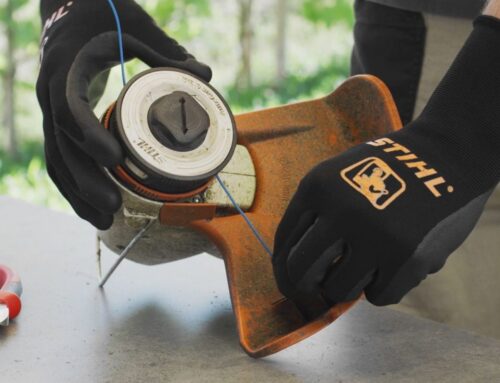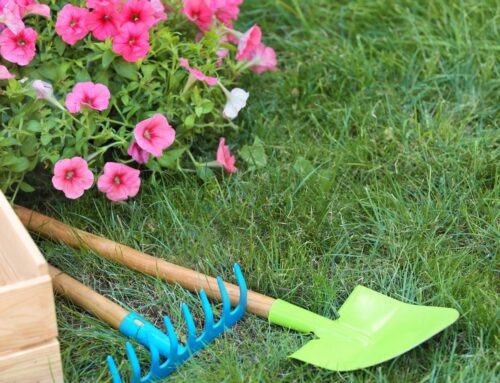
How to Maintain a Petrol Lawnmower in 7 Sensible Steps
No piece of garden machinery makes a bigger contribution to keeping your outdoor area looking spick and span than your lawnmower. But when any machine works this hard, it’s inevitable that it will need a bit of tender loving care, if it’s going to continue to work effectively, over the longer term.
Bearing this in mind, here are 7 sensible steps you can take to maintain your petrol lawnmower. If you follow this advice and keep on top of your lawnmower’s annual service appointments, not only will you enjoy a healthier, more attractive lawn, you could save yourself the unnecessary expense of having to buy a replacement mower too.
So, whether you’re looking at how to maintain a Honda lawn mower, how to maintain a Toro lawn mower, or any other leading brand of mower, please read on to benefit from our simple but invaluable advice…
Step 1: Always Use the Correct Fuel
Just like with a car, your petrol lawnmower is designed to run on a specific type of fuel. So, before filling up the tank of any new lawnmower, be sure to read the manufacturer’s instructions to find out the exact type of fuel the mower requires.
This information can also usually be found on our website but, if you’re in any doubt, please don’t hesitate to contact a member of our friendly, UK-based Customer Service Team, who will be delighted to help.
Naturally, you’ll want to ensure the fuel you use is fresh too. So, before storing your petrol mower for long periods, we recommend draining the tank. Then, at the start of the mowing season, or after any extended period of non-use, you can add new fuel to benefit your mower.
(On this point, please note that we sell Honda Fuel Stabiliser and Briggs & Stratton Fuel Fit Additive. These products, when mixed with the fuel, allow it to be stored in the tank or can for longer periods of time, as well as cleaning and protecting the engine.)
Also, particularly during the spring and summer months, when your petrol lawnmower is at its busiest, be sure to check the fuel level before you mow. Some lawnmowers are designed with outwardly visible fuel indicators to help you do this but, if not, simply remove the petrol cap and give the machine a gentle shake.
Step 2: Changing the Lawnmower’s Oil
Oil performs several essential functions in an engine. Firstly, it keeps the moving parts lubricated, which is key to preventing wear and tear. Secondly, it prevents the heat and friction generated by the moving parts causing the engine to overheat. And finally, oil helps trap the dirt and debris that accumulates in an engine, to keep it running smoothly and efficiently.
Just like with fuel, you will need to ensure you add the correct type of oil to your lawnmower’s engine. Again, you can find the appropriate information either in the manufacturer’s guidance, on our website, or via our UK-based Contact Centre.
In terms of domestic use, you should replace the oil filter in a petrol lawnmower annually. For commercial use, or if you have a very large lawn that requires mowing frequently, you might need to change it more often. If the latter is the case, as a rule of thumb, look to replace it after 50 hours of use to help keep the engine functioning effectively.
However, it’s important not to be dogmatic about how often you carry out an oil/ filter change. If your lawnmower’s engine starts to consume excess fuel, overheat, smoke, or simply doesn’t sound how it should, this could be a warning sign that you need to act fast. If you’re in any doubt about the oil’s condition, pull out the dipstick and take a look at it.
Step 3: Sharpening the Lawnmower’s Blades
You wouldn’t expect a hairdresser to give you a short back and sides with blunt or rusty scissors, so, as someone who cuts grass, be sure to treat your lawn with the same level of respect by ensuring your lawnmower’s blades are always in tip-top condition.
You can achieve this through a good visual inspection before mowing. Should the blades need sharpening, firstly disconnect the spark plugs, then remove and clean the blades. Once this is done, stroke a flat hand file from the blades’ inner to outer edge until they’re sharp and shiny.
Any peculiarities relating to different types of petrol lawnmower, along with how to reassemble the machine and balance the blades, should be detailed in your lawnmower’s instruction manual.
Of course, not everybody possesses these levels of practical skills, so if you don’t have the confidence to carry out this type of maintenance, contact your lawnmower brand’s nearest dealer, who should be able to help.
Step 4: Air Filter Maintenance
Just like on a car, a petrol lawnmower’s air filter prevents dirt, and other debris, from entering the engine and clogging up the moving parts. This ensures clean airflow within the engine, improving your lawnmower’s performance and increasing its lifespan.
And because your lawn will usually be long when you come to cut it, there will inevitably be plenty of dirt and debris hiding amongst the grass. So, one of our key tips of how to maintain a push mower is to keep your lawnmower’s air filter as clean as possible.
To do this, simply take the filter out and use a soft brush or vacuum cleaner to remove any dirt. Replace the filter and it’s job done.
As is the case with the oil filter, you should change your petrol lawnmower’s air filter once a year. The best time to do this is either during its annual service or in spring, just before the mowing season starts.
Step 5: Taking Care of the Chassis and Wheels
In your haste to monitor the lawnmower’s engine, don’t neglect to take good care of its chassis and wheels.
After every use, remove any grass and other debris from all external parts of the mower, before giving it a good clean. Then, lubricate any joints with WD-40. Pay particular attention to your lawnmower’s lifting mechanism, as this is the part that allows you to adjust the cutting height.
In addition, check the wheels are all in good working order, and use a screwdriver to ensure they’re tightly attached to the lawnmower’s frame.
Step 6: How to Maintain a Riding Lawn Mower
If you use a ride-on mower, you’ll need to carry out all the maintenance tasks associated with push mowers, and more.
In terms of the external parts, cleaning a riding lawn mower will inevitably take longer. It might be time consuming but regular cleaning of the underside of your machine, in particular, is absolutely essential both to avoid metal parts rusting and prevent the engine from clogging.
Other specific areas to monitor include any wearing parts, such as the deck or drive belts; the seating; lights; blade engagement; cutting height and pitch setting – you’re simply taking a little bit of time to make sure that everything’s in good working order to save potential problems arising at a later date.
Test the forward drive and brakes too, along with ensuring that the mower doesn’t move when it’s positioned in neutral.
And as most riding mowers have pneumatic tyres, you’ll also need to monitor their tyre pressures. The recommended PSI will vary according to the size of the tyres and the brand of mower, so always consult the manufacturer’s handbook.
Step 7: Effective Lawnmower Storage
A high-quality petrol lawnmower should last you for years, as long as it’s properly maintained AND stored.
This means that whenever your lawnmower is not in use, you should keep it undercover, protected from the elements. It may well be that you have adequate room to house it in your shed, although please be mindful not to place other stored items on top if it, as this may damage the chassis, handle or wheels. It’s just common sense really, isn’t it?
If your outdoor space and budget allows, it might be worth purchasing a specialist lawnmower storage unit from a local or online retailer. Most specialist mower stores are made from wood, extremely attractive, and available in a range of sizes to cater for all types of hand-held lawnmowers.
Petrol Lawnmowers for Sale (and More) Here!
Here at Garden Machinery Direct, we stock an unbeatable range of petrol lawnmowers for sale!
And if you’re after a particular type of accessory for your mower, for example spare blades or a new grass collector, you may well find them amongst the Accessories for Lawnmowers section of our website.
What’s more, we also have a fantastic selection of spare parts for petrol lawnmowers, so, in the event that your careful lawnmower maintenance doesn’t suffice, you might be able to get your hands on a replacement part, without incurring the expense of a completely new machine.
From all of us at Garden Machinery Direct, happy mowing!




